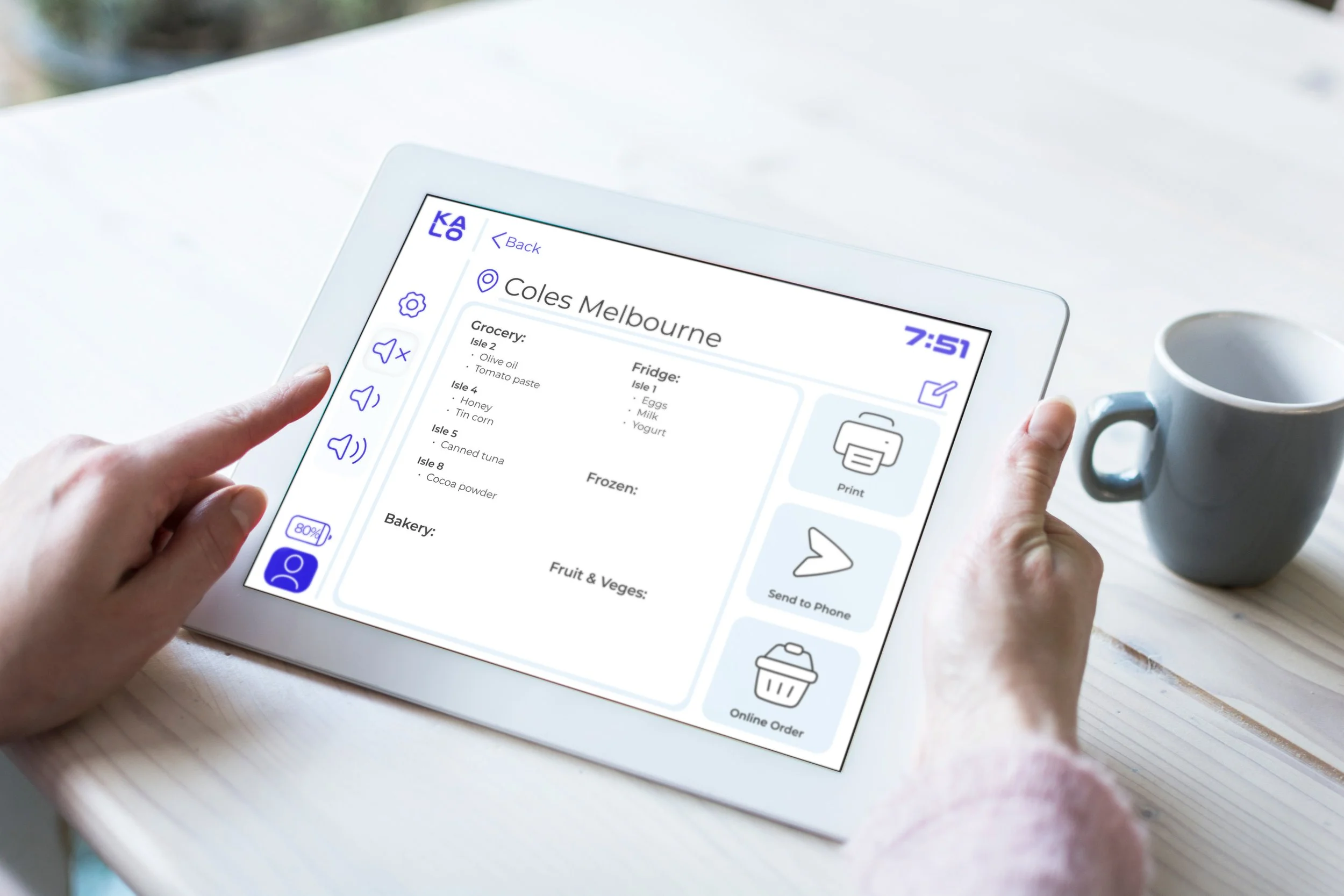Kitchen assistive living organizer (KALO)
2025 │ UX capstone project.
Project overview:
The brief.
The client was Maureen Thurston-Chartraw, the CEO of the company Access Partners, who wanted us to design a system that would allow older people to age in their homes and reduce the amount of assistance they need. We had to choose a room in the home for the system to be used in. This was a group assignment with five members in total.
The process.
We followed the double diamond process for this brief.
Including primary and secondary research into our users.
Summarising the data from that into personas, affinity diagrams, and journey maps.
Coming up with many possible design solutions that would work with our target audience
Before finalising our chosen solutions and creating the prototype to present to our client.
The solution.
KALO, or kitchen assistant living organiser, manages the inventory of a person's kitchen, including the fridge, freezer and pantry. It keeps track of expiration dates, makes shopping lists based on what users want to cook. And shows new recipes for meals currently in inventory. It works with a system of cameras located in a person's kitchen that keeps track of what they have and when it expires. It takes a lot of mental effort off older people who often struggle with keeping food in their pantry or knowing what they need to buy.
Through observations, semi-structured interviews, and surveys, we got a good understanding of how our target audience uses the kitchen, and the common issues found that impact their daily life.
Every user was in the kitchen multiple times a day. But most didn’t like cooking and were just trying to meet their nutritional needs.
The most common issue was bending down or reaching up to grab something, which causes physical discomfort and pain for the user.
Users liked preparing simple meals they knew from memory, or prepacked meals from the supermarket.
Users struggled to remember what they had in their fridge and freezer, leading to either overspending or not having ingredients needed to make meals.
The biggest safety issue was burning. Either from leaving the stove top on or from oil from a frying pan.
Understanding users :
Our client wanted a system that would be able to fit into any home, preexisting or a new build.
We wanted something that would respect the privacy of the user, as kitchens are typically very personal spaces, and we wanted to respect that.
From our secondary research, we learnt that our target demographic is very apprehensive about technology they don’t understand.
Challenges:
Make the system as small and unintrusive as possible. It connects through Wi-Fi, so there is no need to wire anything, and you can put the cameras anywhere you need them to be, adding or taking cameras away as needed.
We would put the cameras inside cabinets and fridges instead of them being open. This means users aren’t being watched all the time but still have the cameras close enough to monitor what food is in the cabinets.
The system would be designed in a way that would appeal to older users by including big buttons, clear directions, and big text. For them to read.
Solutions:
I think that the team worked really well to create the final prototype. But this was originally not what we were going with. We were close to going with a prototype that was a smart table that would help people cook meals. But we were given feedback from our users that they didn’t like the idea and were not inclined to use it. As a result of this feedback, we scrapped the idea and moved on to KALO, which is a much better idea overall. I think this shows how you shouldn't be too attached to an idea.
Reflection:






